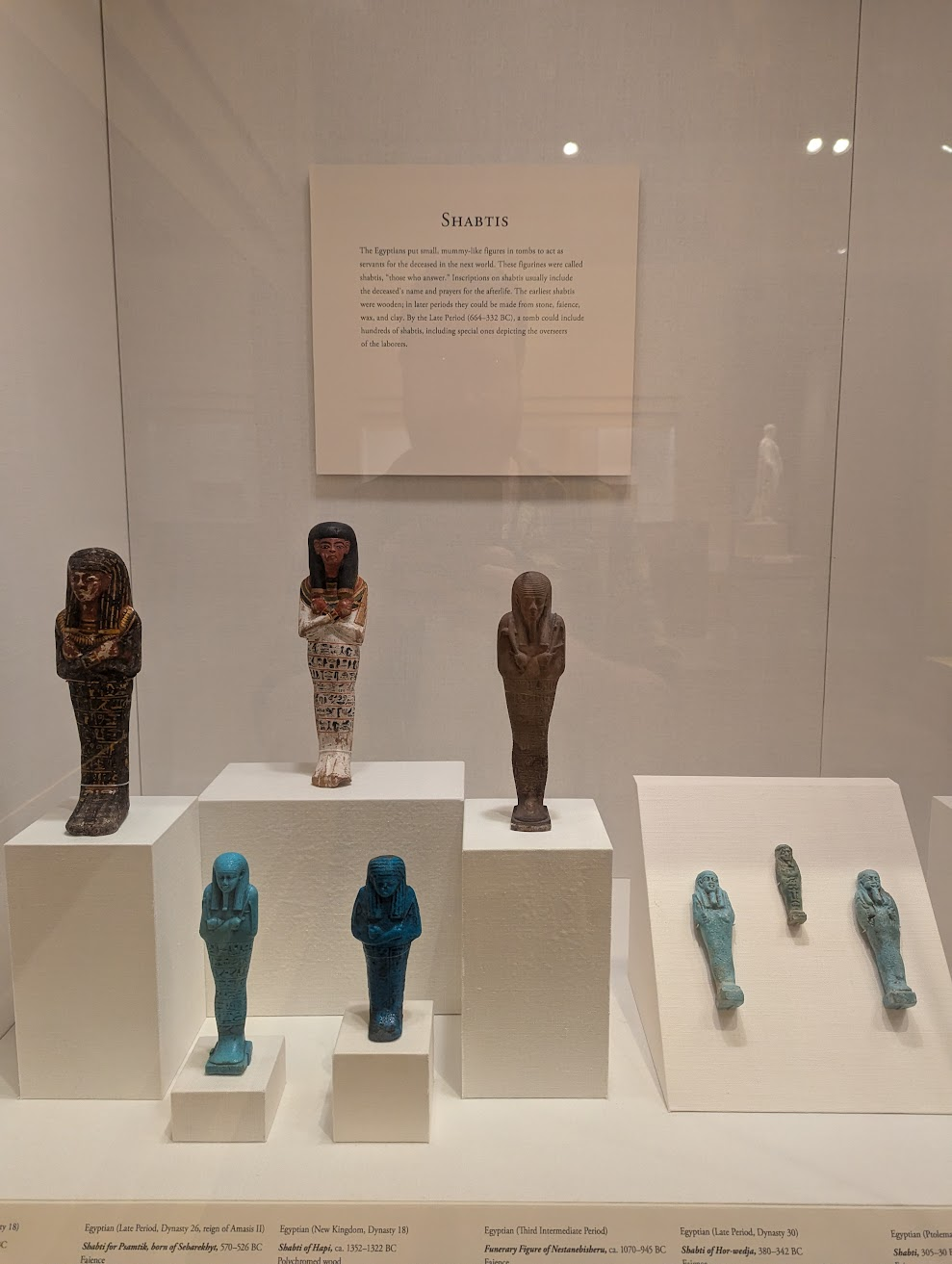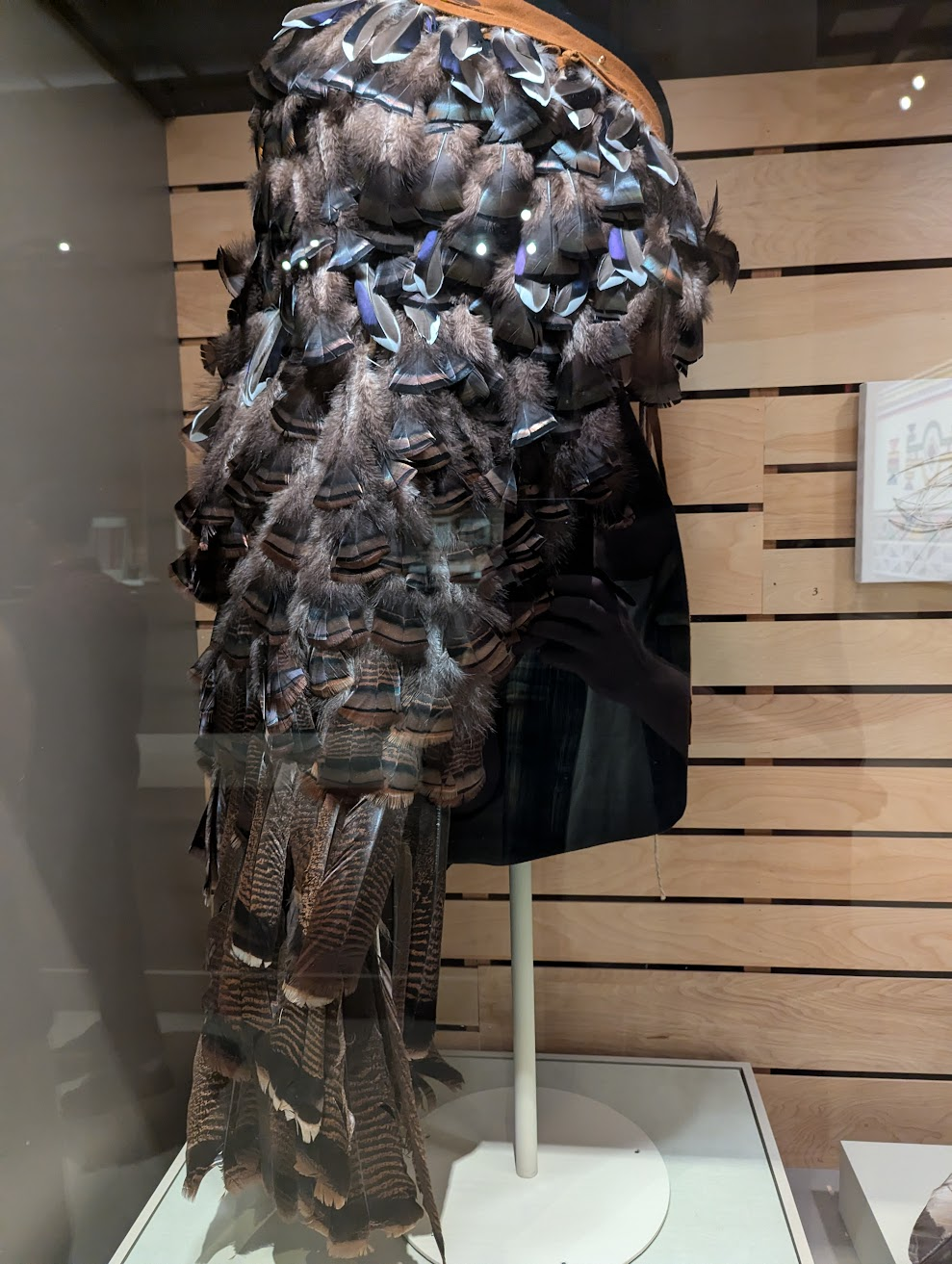Every time I go to a museum, I think "Wow, these artifacts are so interesting. The real world is so much weirder and more fantastic than the loot described in the pages of dungeon modules. Treasure should be WEIRDER."
I think that might be broadly true, but it also carries some risks for usability at the table.
Because the real world does have these layers of history (that's why I'm in the museum! to learn about this stuff!), the baseline for my expectations is different. If I were to just straight port the treasure I am looking at into a dungeon I ran, I'd have to explain what the hell I was talking about to my players. Saying "Golden idol with ruby eyes" is probably aligned with me and my players baseline.
 |
| Torque, Virginia Museum of Fine Art |
Saying "Torque, which is used as a trading currency," I'd have to act as a museum plaque for my players for a minute. Which is fine, but does take some extra time at the game table, and that carries a cost if you do it too much.
I wrote about my experiences running the Lord of the Rings Adventure Game. Check out the loot that the players find in the troll hole in that module. It was a lot of treasure!
I think having rooms full of treasure make sense. A hoard should feel like a hoard, you know? Be overflowing with goods of different types. Coinages of different make, for instance! But when reading a list of 50 items to the players, you can see they get overwhelmed.
Anyway, here are some things that I think would be good treasures for your dungeon, if given in moderation.
 |
| Kovsh, Virginia Museum of Fine Art |
 |
| Shabits, Virginia Museum of Fine Art (Should be animated servants instead of just like, raw treasure) |
 |
| Cloak of duck feathers, Virginia Museum of Fine Art |
 |
| Arms and armor, Musée de Cluny |
 |
| "Unicorn horn," Musée de Cluny (I already wrote about this one) |
 |
| Relic of a Saint, I forget which one, Musée de Cluny |


Some of the artifacts in the Irish National Archaeological Museum definitely seemed like great treasure to me. Necklaces of twisted gold like https://www.museum.ie/en-IE/Museums/Archaeology/Exhibitions/Or-Ireland-s-Gold and the heavy-metal cauldron at the bottom of https://www.museum.ie/en-IE/Collections-Research/Irish-Antiquities-Division-Collections/Collections-List-(1)/Stone-Age/Prehistoric-Details , for example.
ReplyDeletea not so fascinating fix i use at my table is just describing 5-6 unique items from the hoard and then giving broad strokes for the rest (seems like mostly swords and etched jewels). then players can sort through it during downtime/camping/whatever and get another few bespoke descriptions for each watch spent doing that. if you wanna get fancy you can always just print out item descriptions and give a stack of cards to players for them to sort thru at their leisure later too.
ReplyDelete